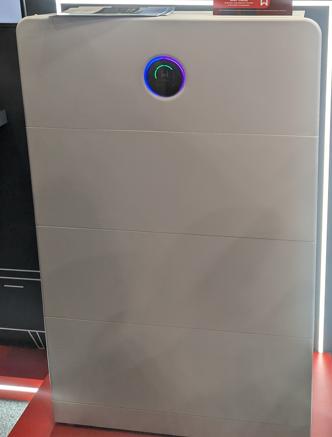Goodwe Solar inverter review - Updated November 2025
Goodwe have a new all-in-one inverter, battery and backup product...the ESA (08) 9467 9655
Confusingly, the product is actually CEC approved as EHA not ESA.
The approved models are:
GW5K-EHA-G20 - 5kW single phase.
GW6K-EHA-G20 - 6kW single phase.
GW8K-EHA-G20 - 8kW single phase.
GW9.999K-EHA-G20 - 9.999kW single phase.
Why the last one is not 10kW is beyond me.
Imitation is the sincerest form of flattery
This product is a copy of Sigenergy's amazingly successful Sigenstor range.
It looks the same, right down to the lights on the front.

5kWh and 8kWh battery options, mix and match - same as Sigenergy.
Parallel-connected, DC-DC converters (optimisers) in each battery - same.
Thermal resistance panels - same.
Mica sheets between rows of cells - same.
Aerosol fire extinguisher - same.
Pressure relief valves - same.
The Sigenergy product has a well priced DC EV Charger option, bi-directional too (V2H)
It uses a lot of AI too, most of it very helpful.
None of that in the Goodwe clone, or at least, not yet.
Goodwe have been around a long time in the Australian market.
They have always been high on features, mid-range on price.
They aren't the most reliable of brands but they aren't horrible either.
Their support service is good and warranties replacements have been reasonably prompt.
Prompt means about 2 weeks downtime which is about normal for getting gear to us in WA.
If you have the money, buy Sigenergy.
If you want a clone at a lower price, then this is a decent choice.
For a good 'budget' system that's lower priced than Goodwe, consider FoxEss.
Datasheet
Goodwe EHA/ESA all in one inverter and battery and backup.
or email
If you would like us to quote you on a Goodwe inverter, (or any other), please get in touch.
(We are in Perth, Western Australia).
This review was written by Andrew MacKeith, Solar4Ever service manager since 2011.
